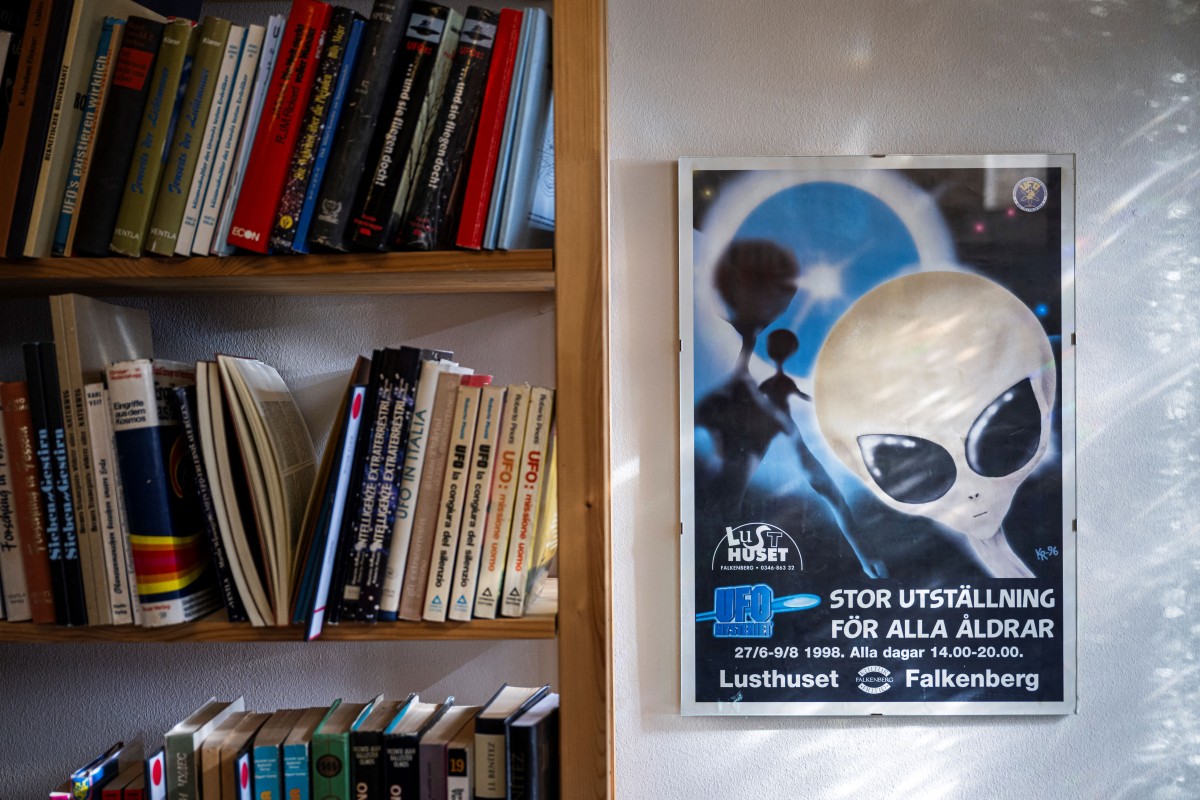Norrköping, Sweden – Newspaper clippings, books and first-hand accounts of people who said they visited other planets are catalogued in a giant Swedish archive on paranormal phenomena, attracting the curious and researchers from around the world.
The Archives for the Unexplained (AFU) claims to be the world’s biggest library of paranormal phenomena, with 4.2 kilometers (2.6 miles) of shelves running underground.
Clas Svahn, 65, and Anders Liljegren, 73, who run the archive located in the southeastern town of Norrkoping, say they are neither superstitious nor believers, but rather “curious investigators of the unknown”.
The AFU — the name of both the library and the association that has collected documentation for more than 50 years — is mainly comprised of books, but also more original documents, such as first-hand accounts of paranormal activity recorded on tape and photos of ghosts.
“What we are building here at AFU is depository knowledge,” explains Svahn, showing AFP journalists around the 700-square-metre (7,535-square-foot) library.
“We’re trying to get as much as we can on… every kind of unsolved scientific mystery that we can find… to make this available for the world.”
The library receives around 300 visits each year, by appointment only.
The archives are in the process of being digitalized and many of the documents can already by consulted on a server.
All that is needed is an access code, which the pair are more than happy to share.
Growing acceptance
Greg Eghigian, a professor of history and bioethics at Pennsylvania State University in the United States, visited the AFU to do research for a book on the history of UFOs (unidentified flying objects).
“I have worked in countless archives in Europe, the United States and the UK. My time at the AFU was easily the most fascinating and most productive,” he told AFP.
“The AFU is without question the… most comprehensive archive for materials involving the global history of the UFO phenomenon in the world,” he said, adding: “One cannot study the subject thoroughly without consulting its holdings.”
The study of UFOs has long been stigmatized, but is becoming a more accepted field of scientific research.
In September 2023, NASA officially joined the search for UFOs, saying the discipline required “a rigorous, evidence-based approach.”
At the AFU, Svahn flips through the yellowed pages of a book with a red cover.
The work is from the underground UFO scene in the former Soviet Union, typed up clandestinely in only seven or eight original copies.
The book is “one of the rare things we have”, Svahn says as he peruses the handwritten notes in Russian in the margins and sketches of rockets.
“They didn’t know what they were seeing… but we can compare this with our own files and (can conclude it was) rocket launches from the Plesetsk rocket base” which were secret at the time, he says.
Victor Hugo and Vietnam
The AFU archives contain some surprising material, including a little-known anecdote about French writer and politician Victor Hugo, currently on display at the Norrkoping museum of art.
In notes he wrote during his political exile on the British island of Jersey from 1852-1855, Hugo described having encounters with his dead daughter.
These writings contributed to the birth of a new religion now practiced by several million followers in Vietnam, Caodaism, said exhibition curator Magnus Bartas.
A fresco of Victor Hugo today adorns the wall of a temple a dozen kilometers north of Ho Chi Minh City.
The AFU, administered by an association of volunteers and hobbyists, “also covers the folklore, the beliefs” associated with paranormal phenomena in general, said Svahn.
“We love to see this as a social thing, impacting society all around the world and impacting people’s lives.”
Beliefs evolve over generations and what was superstitious and rejected as such in the past may not be as stigmatized today.
Swedish artist Ida Idaida spent a month doing research in the AFU archives to create a giant sculpture made of dark wood.
She sought inspiration from the experiences of witches, detailed in books, whose knowledge has been disdained throughout history, she told AFP.
People whose experiences and accounts are not taken seriously in society can find their rightful place in the archive, says museum curator Magnus Bartas.
“The archive says something is unexplained. That means we shouldn’t reject it. We should investigate it. We should be open.”








